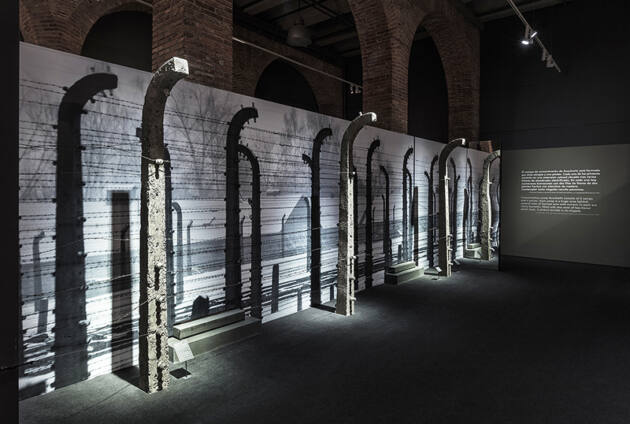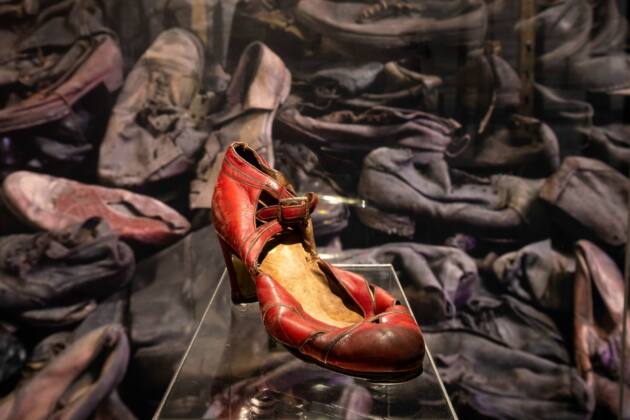Four massive, original concrete posts along with barbed and high-voltage wire used as fencing to surround and divide the Auschwitz-Birkenau Concentration Camp are being installed as part of a touring exhibition in Kansas City. Auschwitz. Not long ago. Not far away. opens at Union Station June 14 with more than 700 artifacts on display.
Originally used to prevent prisoners from escaping Auschwitz, these historic and imposing posts stand more than 13 feet tall. High-voltage electric and barbed wire guaranteed their effectiveness, along with SS guards trained to shoot any inmate who came near the fence.
The traveling exhibit explores the dual identity of the camp as a physical location and as a symbol of the borderless manifestation of hatred and human barbarity. In addition to 700 original artifacts it also includes over 400 photographs, many of which have never been publicly available.
“Today, these artifacts — along with others – serve as visual symbols of death camps created during World War II by Nazi Germany,” said George Guastello, president and CEO of Union Station. “They also stand to remind and warn the world that these human atrocities happened not long ago and not far away.”
The most significant site of the Holocaust, Auschwitz was not a single entity. It developed from a concentration camp created by the SS as a tool of terror in German-occupied Poland into a complex of three main camps and almost 50 subcamps. From spring 1942 the camp combined two functions – a concentration camp and extermination center. Altogether, some 1.3 million people – mostly Jews —were murdered there.
The posts are original artifacts from the Auschwitz-Birkenau State Museum. Established in 1947 thanks to the efforts of survivors, the museum preserves the two largest parts of the concentration and extermination camp complex: Auschwitz I and Auschwitz II-Birkenau, totaling some 500 acres with 155 historical buildings and about 300 ruins, including the ruins of gas chambers and crematoria.
In addition to the unique collections and surviving fragments of the post-camp archives, these relics – including the fence line section — represent a tangible, lasting trace of the tragedy.
All admission tickets are offered on a reserved date and time basis and currently are available only at Union Station’s ticket office or online at unionstation.org.
–Dwight Widaman | Metro Voice










